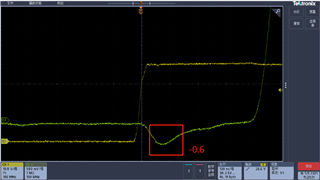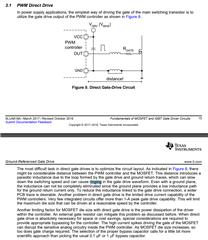Hi Anthony,
We are working on the problem of DRV8323 again, I want to confirm one thing
Is it normal for the VGS to have negative voltage when we use the 8323 to drive the motor, is it within the expectations of your chip design?
If this negative voltage is also generated during your use, and you think it is normal.We will not think that the 8323 damage is caused by it,
and then we will not waste time on researching how to reduce the negative voltage
e2e.ti.com/.../drv8323-drv8323-gate-drive-fault

Thanks
ZX




